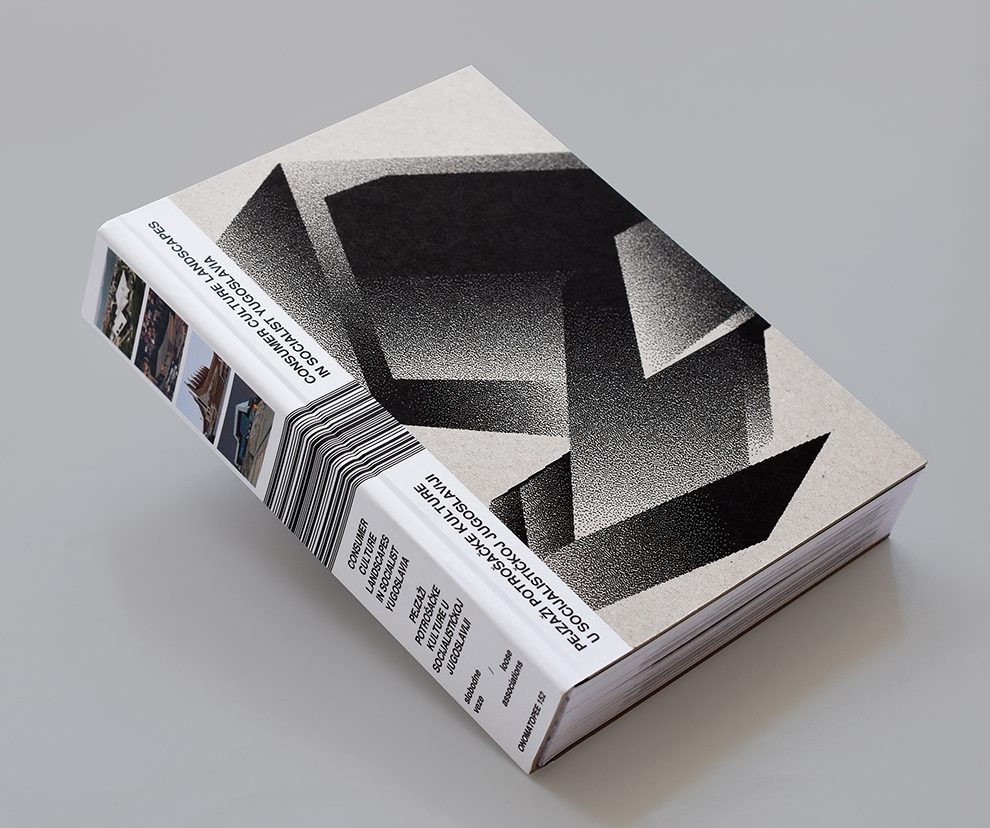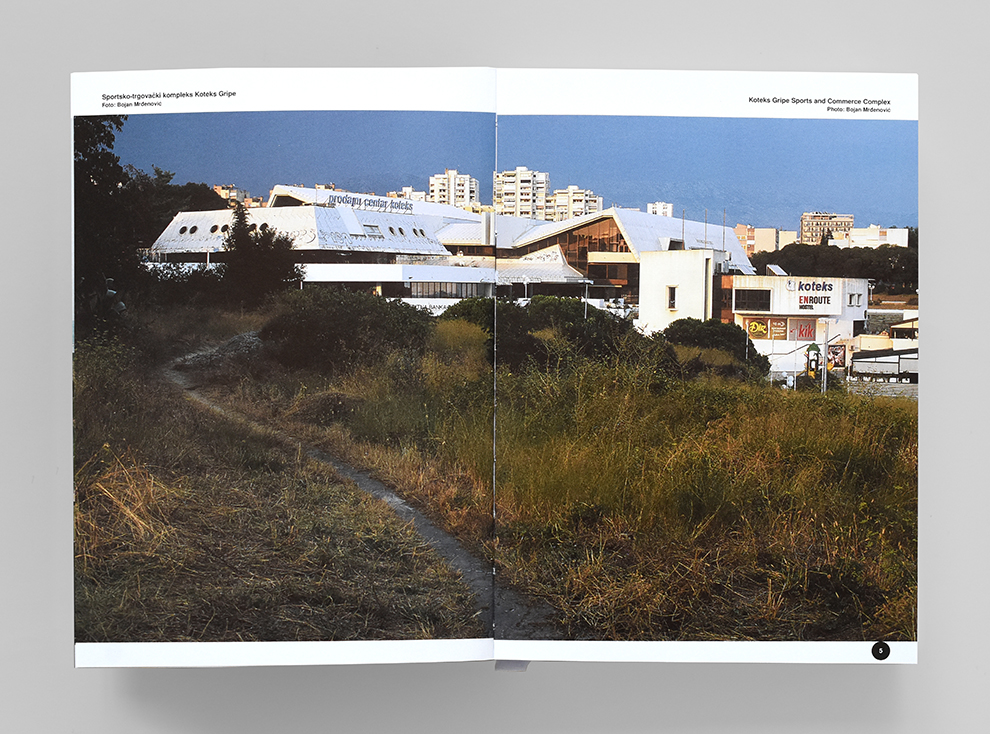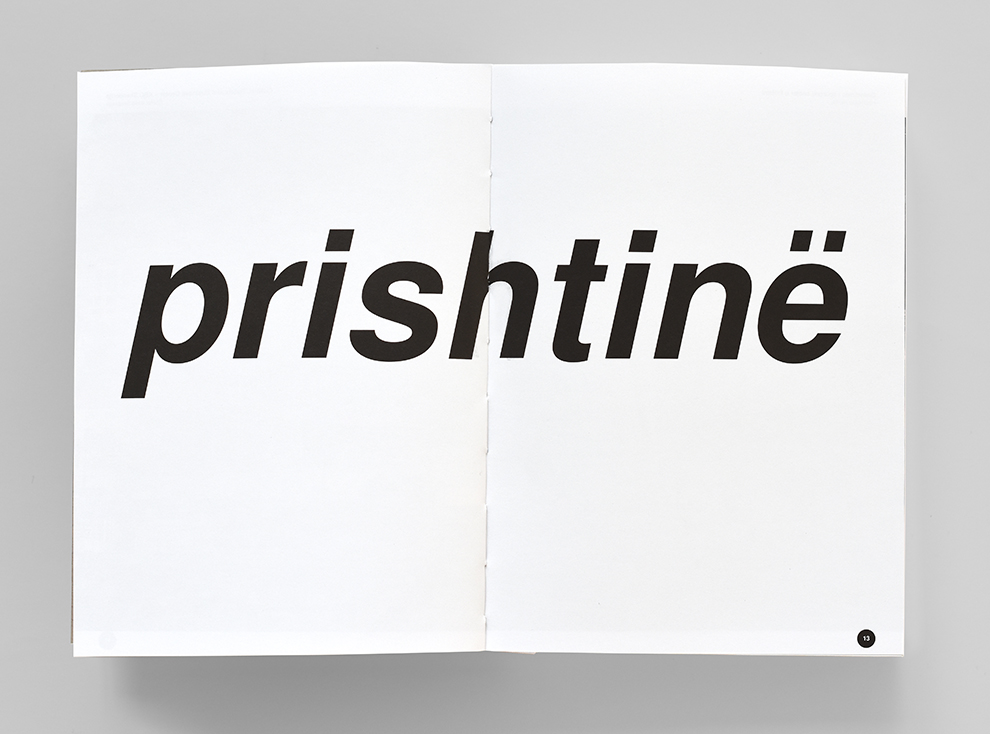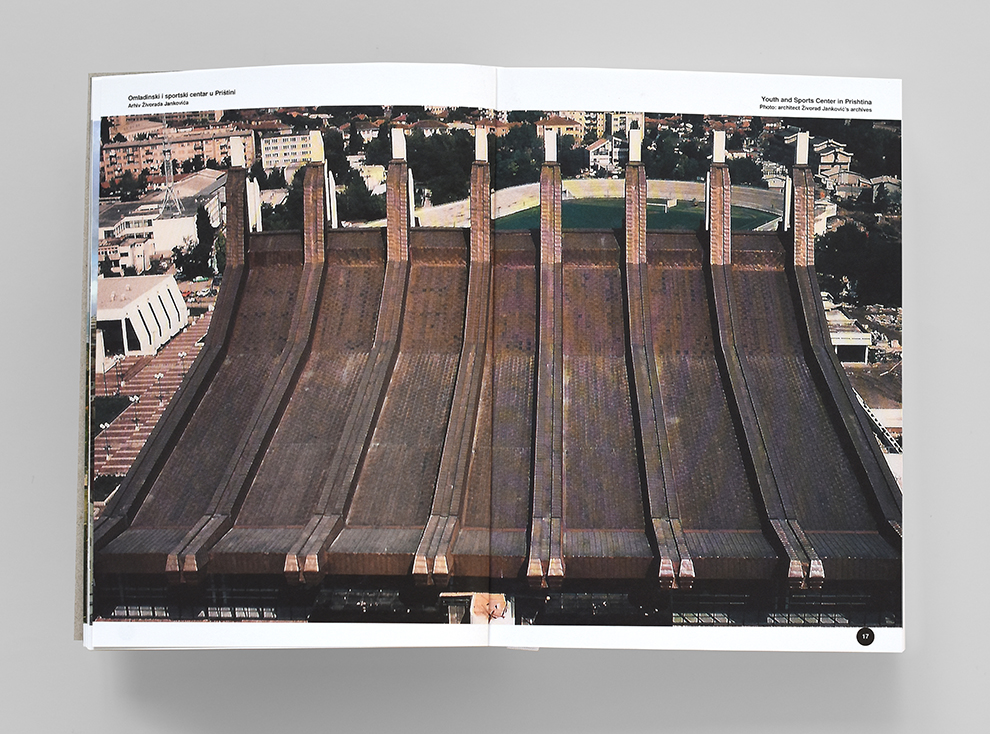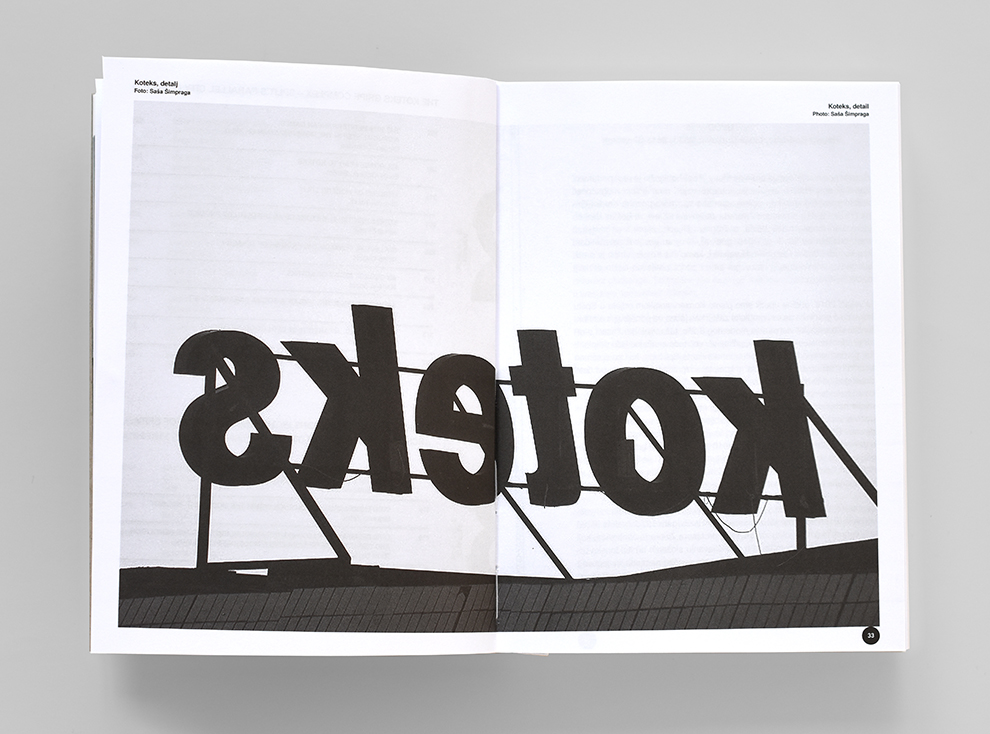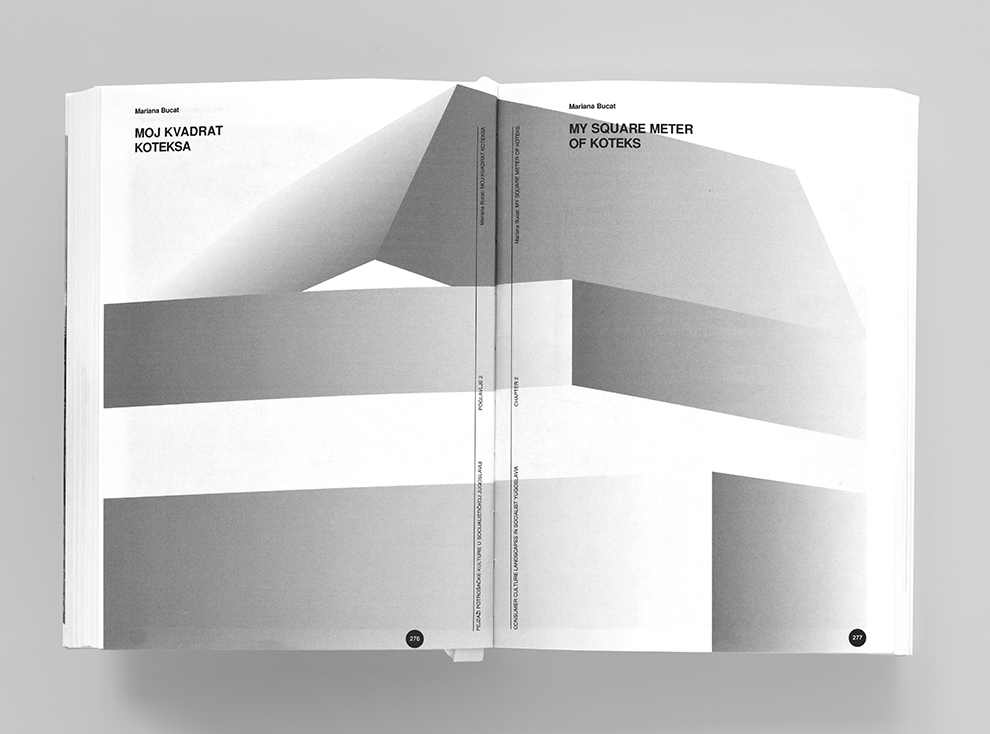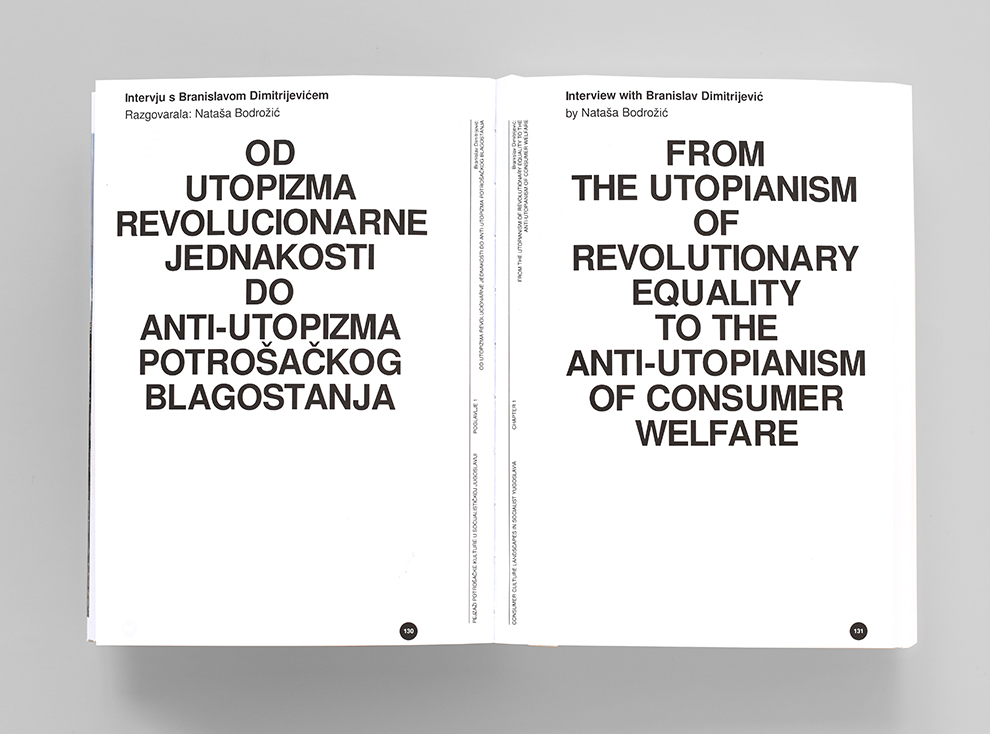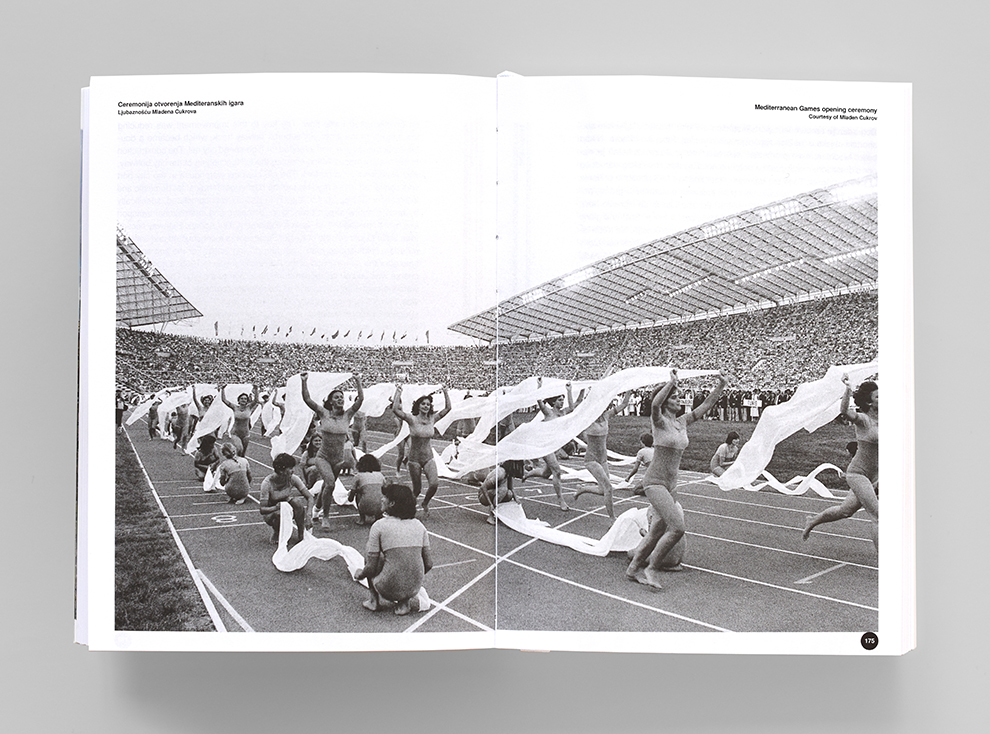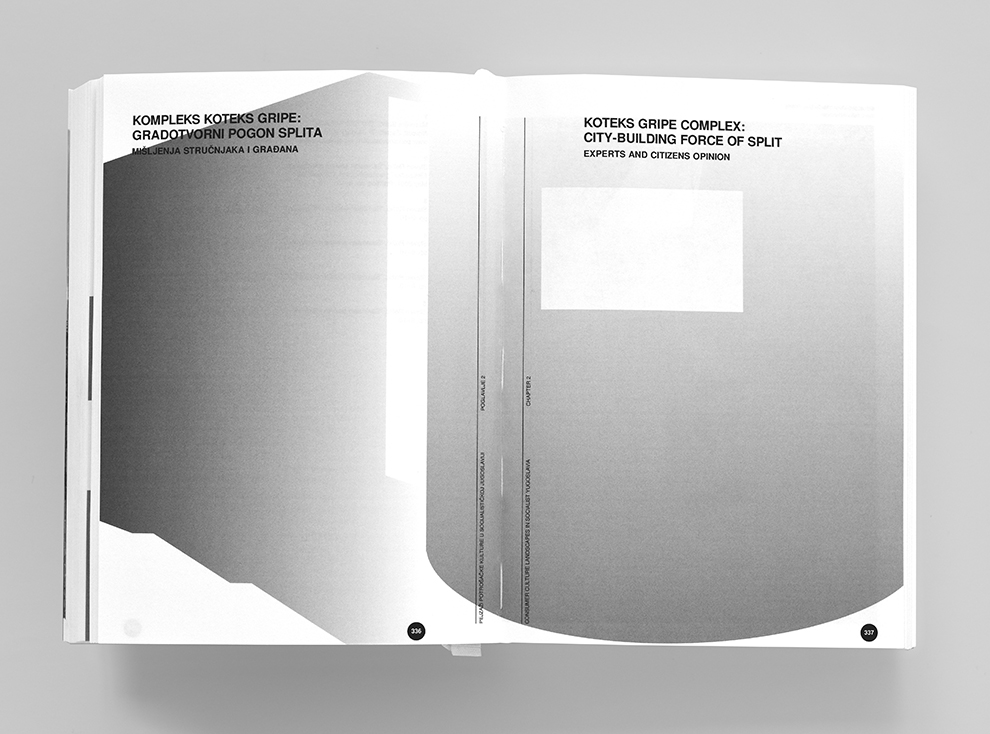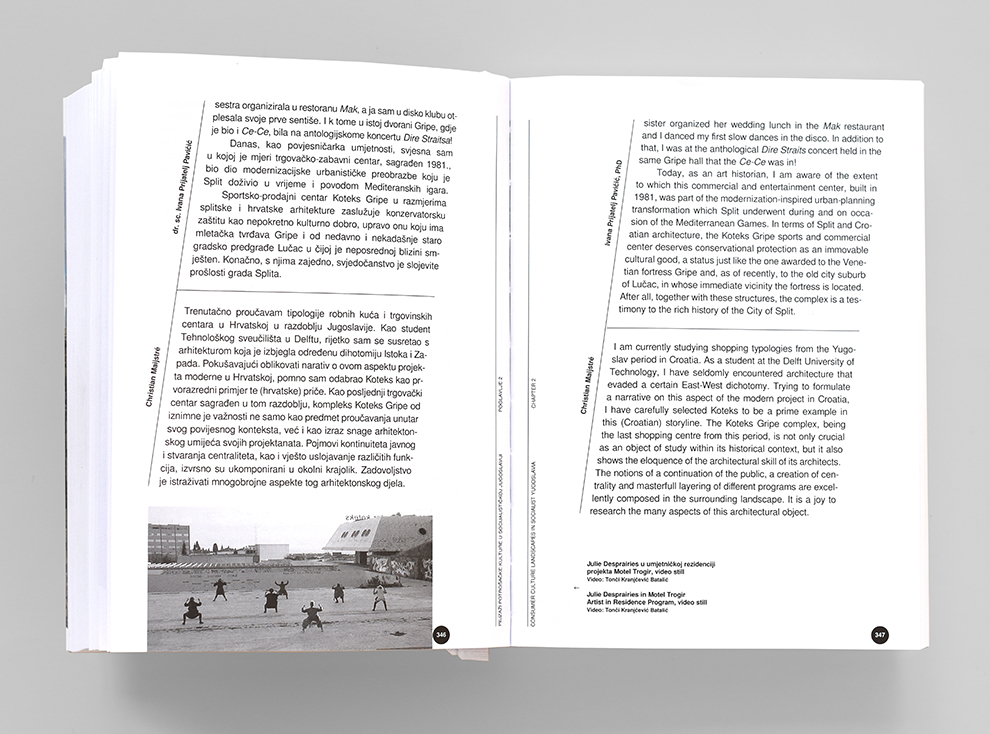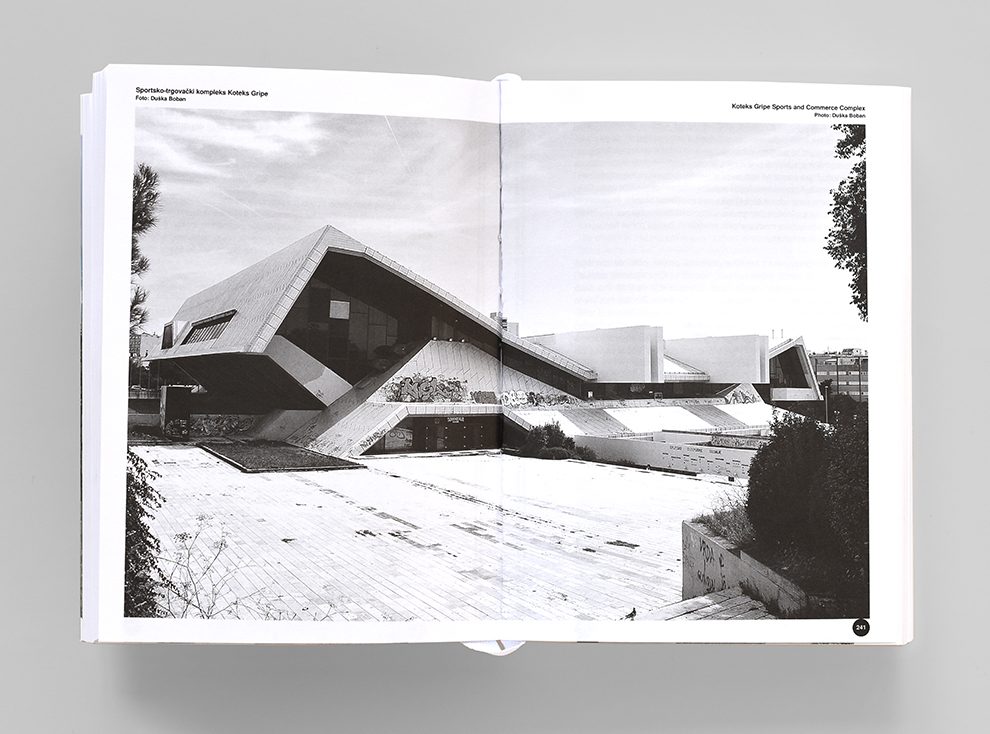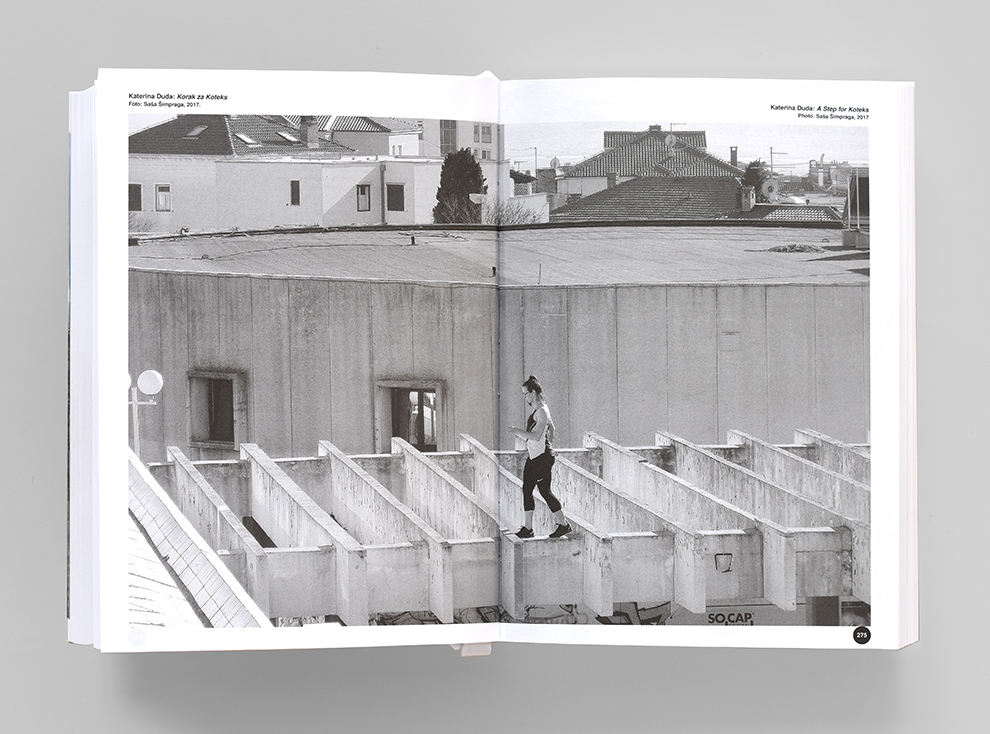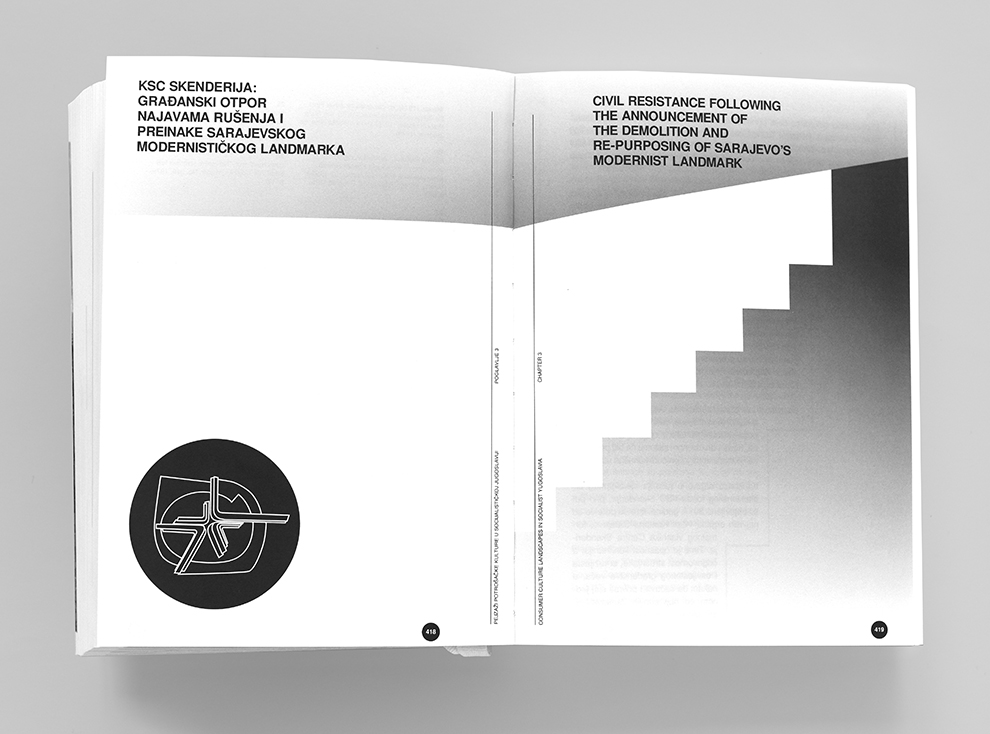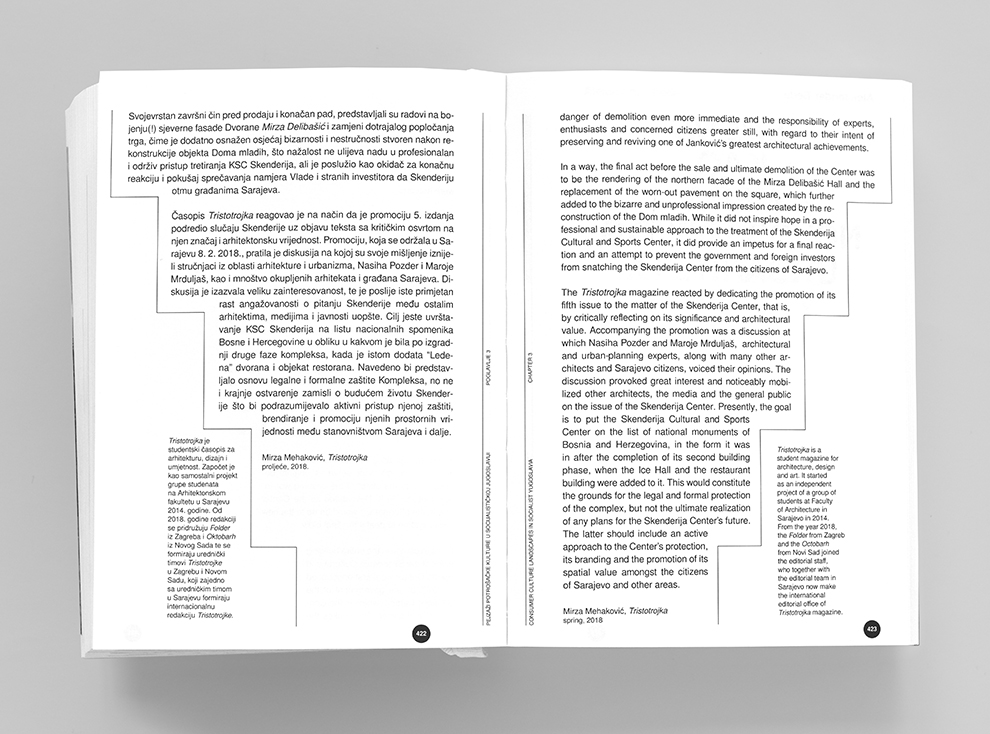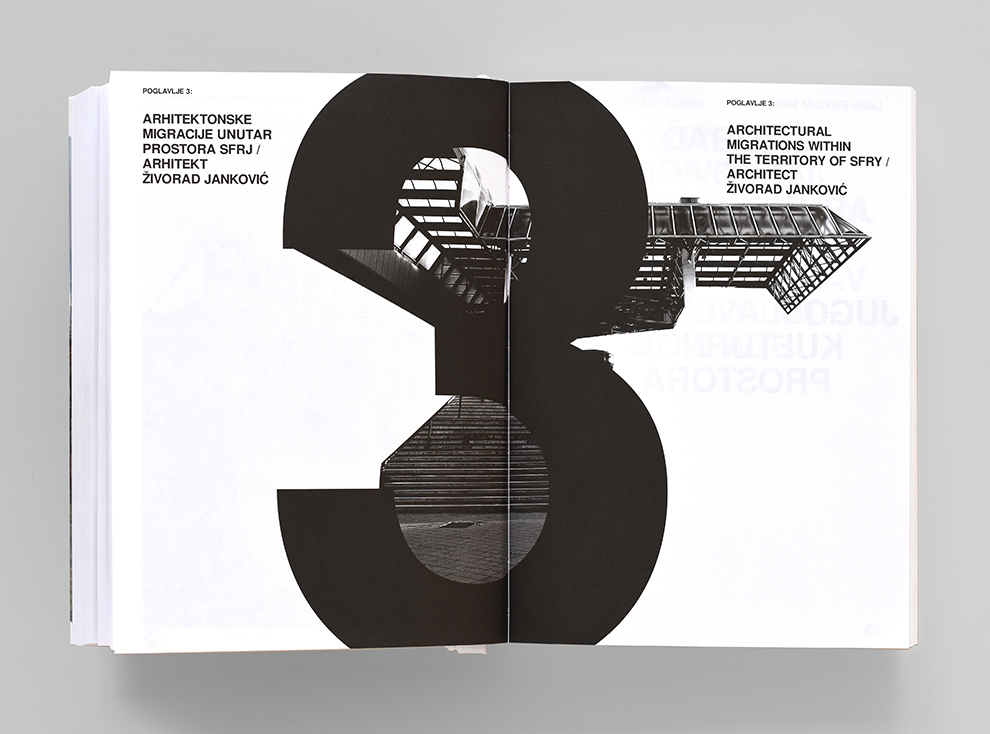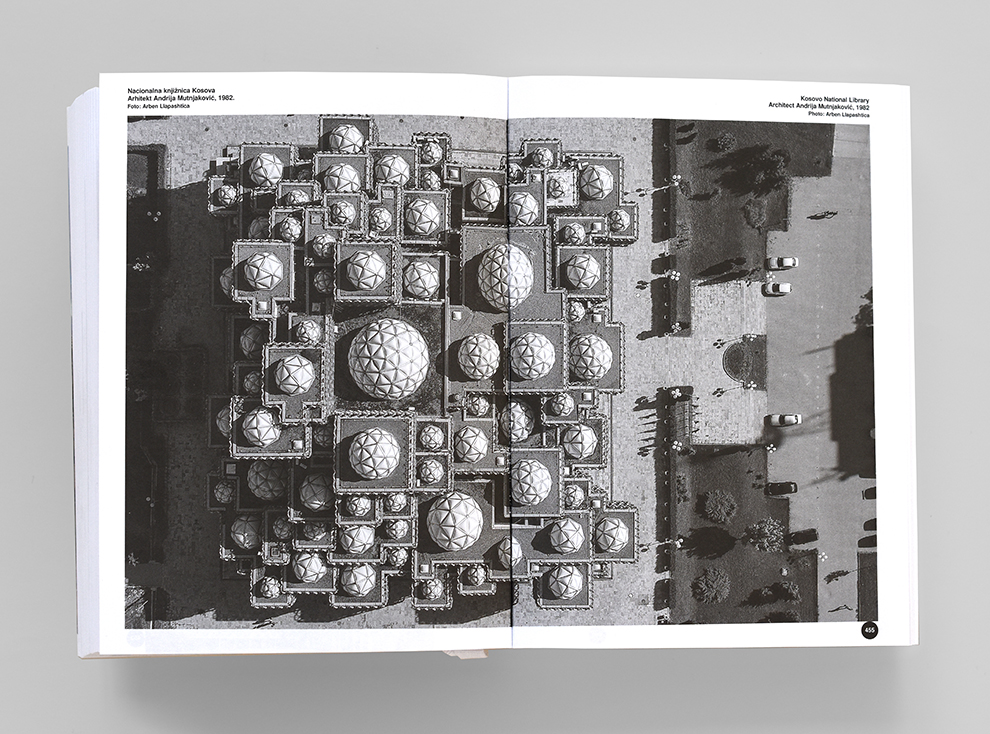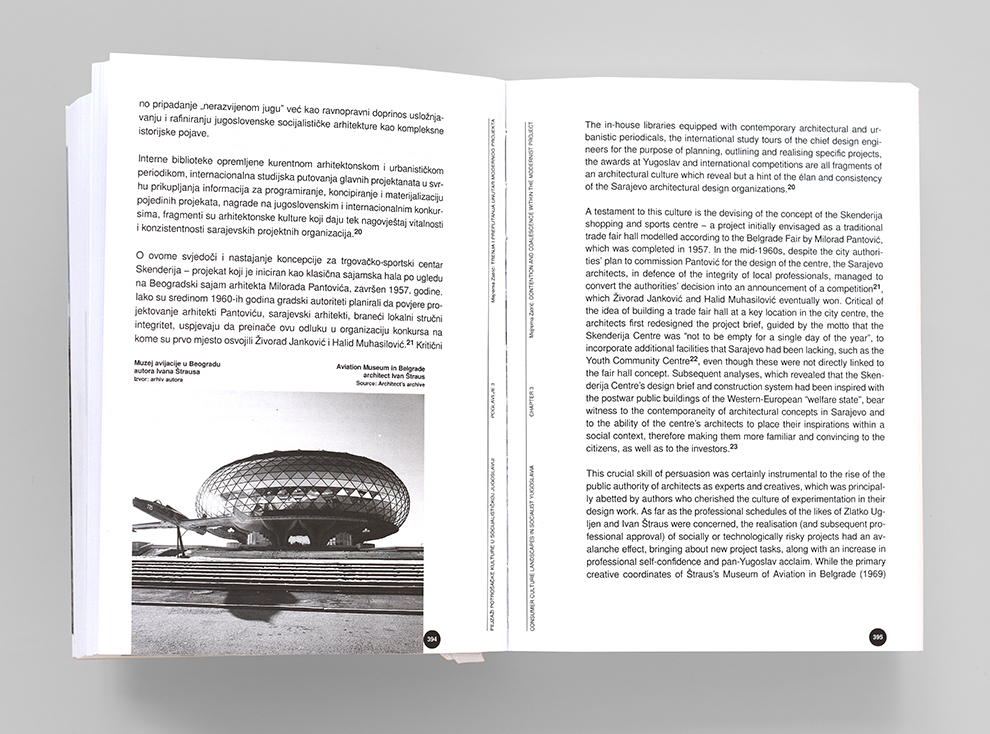Consumer culture landscapes in socialist Yugoslavia
(March 2019)
Socialist Yugoslavia was a unique experiment with progressive social forms that were matched by specific urban development. Since the mid-1960’s until the country’s disintegration in the 1990’s is a period of ambiguity: while according to some researchers, the market-oriented economic reforms brought a much needed opening and liberalization, according to others it marked the beginning of an end of the revolutionary demand for equality. Thus, the anti-utopianism of the consumer welfare reflected in
the rise of the middle class with its recognisable habits and taste.
Following a specific architectural typology, this book delves into this period which brought along social and economic changes.
It focuses on the sports and shopping centre Koteks Gripe in Split and similar architectural complexes in Sarajevo, Novi Sad, and Prishtina all designed by the Sarajevo-based architect Živorad Jankovic and associates, gradually expanding towards broader considerations of the architectural practice, contention and coalescence within the Yugoslav modernist project.
Publishers: loose associations, Onomatopee 152
Editors: Natasa Bodrozic, Lidija Butkovic Micin, Sasa Simpraga
Language: Croatian / English
Pages: 488
ISBN 978-94-93148-00-0
Order at: www.onomatopee.net
